|
2012年度注冊會計師考試綜合階段試題目錄 | ||||
參考答案及評分標準
1. 根據資料一和資料二,對華光眼鏡作出SWOT分析,,評估于2006年初華光眼鏡的優(yōu)勢,、劣勢,、機會和威脅。(3分)
答:優(yōu)勢:進入行業(yè)早,是國內較早從事眼鏡連鎖專賣的企業(yè);行業(yè)市場份額較高,,省內第一全國第五;擁有專業(yè)人才,,管理團隊行業(yè)經驗豐富,尤其在店鋪選址方面;品牌優(yōu)勢,,消費者認知度高,,尤其是對質量的認可。
劣勢:在年輕客戶群中缺乏品牌競爭力,,與年輕消費者的需求有較大差距;對于年輕客戶群這一細分市場,,可能缺乏相關經驗;80%的門店在甲省,區(qū)域集中度高,,尚未形成全國網絡;內部管理信息系統落后于競爭對手,,尚待改進。
機會:國內零售行業(yè)總體高增長的宏觀環(huán)境,,甲省以外其他省份的發(fā)展機會;消費者消費行為的變化,,意味著消費需求有增長潛力。
威脅:各大零售企業(yè)普遍迅速擴張,,行業(yè)內競爭日趨激烈;年輕客戶群這一細分市場的份額在丟失,,面對來自競爭對手的威脅。
2. 簡要說明:(1)為配合新的市場開發(fā)戰(zhàn)略(“明天”戰(zhàn)略),,華光眼鏡應如何改進其財務分析功能薄弱的問題;(2)除了通用的財務報表,,企業(yè)為何通常還需要編制管理用財務報表,其中的管理用資產負債表應如何對資產和負債進行重新分類,。(2分)
答:首先要改進其數據匯總功能的缺陷,,把基礎數據充分利用起來。華光可以將業(yè)務系統和財務系統建立聯系,,利用業(yè)務系統中詳細的底層基礎信息加強銷售收入和成本等數據從不同維度分類匯總的功能,,從而可以靈活地按照內部管理的需要從不同角度獲得量化分析數據。
建議對“華光”和“明天”這兩條業(yè)務線分別形成單獨的經營業(yè)績分析表反映該業(yè)務線的銷售和利潤狀況,,從而及時反映細分市場的經營業(yè)績,。因為通用的財務報表要平衡各類報表使用者的需要,其提供的信息并不能完全適用于財務分析和企業(yè)內部管理,,所以企業(yè)需要針對其自身業(yè)務的特點作出相應調整,,編制管理用財務報表從而適應財務分析和企業(yè)內部管理的需要。
管理用資產負債表將資產和負債重新分類為經營資產負債和金融資產負債,。
3. 簡要分析華光眼鏡為配合新戰(zhàn)略而實施的新的矩陣制組織結構的優(yōu)缺點,。(2分)
答:優(yōu)點:
(1)由于兩名業(yè)務總監(jiān)從橫向分別對華光和明天這兩個業(yè)務線負責,,加強了對細分市場關注,避免了原職能型結構對市場關注不足;
(2)有利于加強各個部門之間的交流和協作,,職能專家不再只關注自身業(yè)務范圍,從而能作出更有質量的決策,,對企業(yè)總體戰(zhàn)略實施更有利,。
缺點:
(1)導致權力劃分不清晰,在職能工作和業(yè)務線工作之間產生沖突;
(2)下屬可能會分不清其工作的哪個方面對哪個上級負責,。
4. 針對華光眼鏡實施“明天”戰(zhàn)略對企業(yè)變革管理進行變革的力場分析,分別簡要分析支持和阻礙變革的力量;針對華光眼鏡總經理趙剛發(fā)現大家存在的三個方面的擔憂,,簡要提出變革管理的措施,。(4分)
答:(1)變革的力場分析:
支持變革的力量:
①外部:年輕客戶群消費需求增長,,市場潛力大,。
②內部:華光眼鏡在細分市場的銷售下降,,產生變更的動力;管理層信心,,董事會支持。
變革的阻力:
�,、偻獠浚盒聵I(yè)務要獲得消費者認同是一個巨大的挑戰(zhàn)。
�,、趦炔浚壕仃囍平M織權力劃分不清或匯報線不清晰,,從而降低工作效率;缺乏新業(yè)務所需經驗;一些人安于現狀不愿意嘗試新的崗位。
(2)變革管理的措施:
�,、賹τ诮M織機構調整問題:某些工作流程可能需要重新設計,,需要對矩陣上縱向和橫向的權利、責任及匯報線作出清晰劃分,,對于難以清晰劃分的事項可以建立溝通協調機制鼓勵沖突領域的對話,。
②對于經驗問題:可以開展員工培訓,,引入新的工作方法,,鼓勵個人和團隊創(chuàng)新,也可以考慮從外部聘請有經驗的人員,。
�,、蹖τ诳冃гu估問題:加強員工溝通,某些績效評估標準需要重新設計,,還可以設計一些獎勵和激勵機制來鼓勵個人參與,。
5. 根據題中給出的南風眼鏡的有關資料,,具體分析華盛股份收購南風眼鏡可以產生哪些協同效應。(3.5分)
答:收購南風眼鏡可以產生以下的協同效應:
(1)南風眼鏡針對年輕客戶群體的豐富經驗,,可以借鑒至華光眼鏡;
(2)采購總量增大后的規(guī)模效應,,增強與供應商的議價能力;華光眼鏡還可以借助南風的一些優(yōu)質采購渠道幫助進一步降低成本;
(3)貼牌生產可以推廣到華光,尤其是明天門店可以考慮銷售此類產品;
(4)南風眼鏡資金緊張,,而華盛股份財務穩(wěn)健可以提供必要的資金支持,。
6. Mr. Colin has asked Sky Consulting (藍天咨詢) to prepare a short summary of key issues identified from the due diligence on Nan Feng Optical(南風眼鏡) in English. He has requested that the summary should include brief finding, implication and recommendation for each issue. On behalf of Sky Consulting, please prepare the summary according to Mr. Colin's request. (7.5分)
Answer:
(1)
● Finding: A stores were profitable, B stores were loss making; Half of B stores were in operation for<3 years. Management attributed the losses to the new
stores, whose sales have not yet ramped up.
● Implication: historical profitability adversely affected by B stores
● Recommendation: Suggest further investigate the market potential outside central area, so as to (i) assess whether the market for B stores are really promising,
(ii) tailor relevant sales and marketing strategy for B stores to improve their performance, and (iii) identify stores that should be closed.
(2)
●Finding:Debt ratio continued to increase. Difficulty to get bank financing.
●Implication: Liquidity risk
●Recommendation: Future financing plan to be considered in advance.
(3)
●Finding: There are 8 stores without written rental contract
●Implication: Risk of not being able to secure the lease (without contract protection), in particular after the change of ownership of Nan Feng Optical
●Recommendation: To sign lease contract before acquisition is completed
(4)
●Finding: Unrecorded liability of Rmb4.5 million identified (financial lease)
●Implication: Net debt understated, hence impact the deal price calculation
●Recommendation: Suggest management to correct the error.
(5)
●Finding: Net investment was understated in the cash flow forecast
●Implication: Cash flow overstated; enterprise value in LOI overstated
●Recommendation: Suggest re-calculate the enterprise value
(6)
●Finding: Sales accountant also act as the cashier
●Implication: Internal control risk caused by no segregation of duties
●Recommendation: Segregation of duty
(7)
●Finding: Chen Nan and Zhang Xiao take critical roles in the daily business
●Implication: The business of Nan Feng likely to be adversely affected if they leave the company after acquisition
●Recommendation: Chen Nan and Zhang Xiao’s continued service in the company (at least in the short term) necessary.
Consider make it a condition in the deal negotiation
7. 根據資料四、資料五和資料六的有關信息,,采用實體現金流量模型計算收購南風眼鏡90%股權的價格金額(需分步驟列出計算過程);并簡要說明為什么實務中估計企業(yè)價值大多使用實體現金流量模型而非股權現金流量模型,。(5.5分)
答:收購南風眼鏡90%股權的價格計算步驟如下:
(1)扣減少計的凈投資,經調整后預測期各年實體現金流量為:1100萬,,1115萬,,1260萬,1315萬,,1667萬
(2)經調整后預測期現金流量現值為:1100*0.8929+1115*0.7972+1260*0.7118+1315*0.6355+1667*0.5674=4549.47萬
(3)經調整后后續(xù)期現金流量現值為:1667*(1+5%)÷(12%-5%)*0.5674=14187.84萬
(4)實體價值=4549.47+14187.84=18737.31萬
(5)凈債務價值=4000+3000+450=7450萬,,或凈債務價值=4000+3000+450-485=6965萬
(6)90%股權的收購價格為:(18737.31-7450)*90%=10158.58萬元,或90%股權的收購價格為:(18737.31-6965)*90%=10595.08萬元
在實務中大多使用實體現金流量模型,,主要是因為用以計算股權現金流量現值的股權成本受資本結構的影響較大,,估計起來比較復雜。比如債務增加時,,風險上升,,股權成本會上升,而上升的幅度不容易測算,。
而用以計算實體現金流量現值的加權平均資本成本則受資本結構的影響較小,,其中債務成本的變化和股權成本的相應變化基本上能互相抵消,所以平均資本成本對資本結構變化不敏感,,在實務當中比較容易估計,。
8. 根據資料五,假設南風眼鏡B類門店固定成本中的租金保持不變,,但通過相關改進措施可使B類門店固定成本中的人工費用和其他費用分別下降15%,,計算分析B類門店銷售收入需平均增長百分之幾才能達到B類門店的盈虧平衡。(4分)
答:盈虧平衡分析:
B類店單店月平均固定成本=2.9+1.9*85%+1.2*85%=5.54萬
變動成本率=3.3÷8.3=39.76%
盈虧平衡點銷售收入=5.54÷(1-39.76%)=9.20萬
增長百分比=9.20÷8.3-1=10.84%,。B類店需增長10.84%的銷售才能達到盈虧平衡,。
9. 簡要說明:(1)與普通債券以及普通股相比,可轉換債券籌資的優(yōu)缺點;(2)上市公司發(fā)行可轉換債券,,除了應當符合增發(fā)股票的一般條件之外,,還應符合哪些條件。(4分)
答:(1)可轉債優(yōu)缺點:
優(yōu)點:
�,、倥c普通債券相比,,可轉債券使公司能以較低的利率先取得資金,。由于票面利率低于同一條件下的普通債券利率,降低了前期籌資成本,。
�,、谂c普通股相比,可轉債券使公司取得了以高于當前股價出售普通股的可能性,。在發(fā)行新股時機不理想時,,可先發(fā)可轉債,然后通過轉換實現較高價格的股權籌資,。
不至于因為直接發(fā)行新股而進一步降低股票市價,,而且由于轉換期較長,轉股時對股價的影響也較溫和,,有利于穩(wěn)定股票,。
缺點:
①股價上漲風險,。雖然可轉債的轉換價格高于其發(fā)行時的股價,,但如果轉換時股價大幅上漲,,公司只能以較低的固定轉換價格換出股票,,會降低公司的股權籌資額。
�,、诠蓛r低迷風險,。發(fā)行可轉債,如股價沒有達到轉股所需要的水平,,可轉債持有者沒有如期轉股,,則公司只能繼續(xù)承擔債務。尤其在有回售條款的情況下,,公司短期集中償債壓力大,。尤其有些公司發(fā)行可轉債的目的是為了籌集權益資本,股價低迷會使其原定目標無法實現,。
�,、劭偦I資成本高于普通債券。盡管可轉債的票面利率低于普通債券,,但是考慮轉股成本后的總籌資成本要高于普通債券,。
(2)除了符合增發(fā)股票的一般條件外,發(fā)行可轉債還需符合的條件:
�,、僮罱�3個會計年度加權平均凈資產收益率平均不低于6%,。扣除非經常性損益后的凈利潤與扣除前的凈利潤相比以低者作為計算依據;
�,、诒敬伟l(fā)行后累計公司債券余額不超過最近一期期末凈資產額的40%;
�,、圩罱�3個會計年度實現的年均可分配利潤不少于公司債券1年的利息,。
10. 根據華盛股份2009年度利潤分配及資本公積轉增股本方案,分別計算實施該項利潤分配及資本公積轉增股本方案對華盛股份的股本,、資本公積及未分配利潤的影響金額;并簡要說明:(1)公司法關于公積金的提取有哪些規(guī)定; (2)按照公司法規(guī)定,,公積金有哪些用途。(4分)
答:實施該項利潤分配及資本公積轉增股本方案對華盛股份的股本,、資本公積及未分配利潤的影響金額計算如下:
股本增加50000*0.2+50000*0.4 = 30000萬元
資本公積減少50000*0.4 = 20000萬元
未分配利潤減少50000*0.1+50000*0.2 =15000萬
(1)公積金提取的規(guī)定:
�,、俜ǘüe金按抵減年初累計虧損后的本年凈利潤按10%的比例提取,當法定公積金累計額達到公司注冊資本50%時可不再繼續(xù)提取,。
�,、谌我夤e金按照公司股東大會的決議提取。
�,、酃救绻麤]有提取法定公積金之前就向股東分配利潤的,,必須將違反規(guī)定發(fā)放的利潤退還給公司。
(2)公司法規(guī)定的公積金用途:
�,、購浹a虧損,。盈余公積(包括法定盈余公積和任意盈余公積)可以用以彌補虧損,但是資本公積不得用于彌補公司虧損,。
�,、跀U大生產經營。盈余公積和資本公積均可做此項用途,。
�,、坜D增資本。用法定公積金轉增資本時,,轉增后留存的法定公積金不得少于轉增前公司注冊資本的25%;對于任意公積金和資本公積轉增資本則沒有比例限制,。
11. In early 2011, Mr. Colin heard from a friend that the landlord of the largest store of Hua Guang Optical (華光眼鏡) was considering whether to sell the building (where the store was located) to another company for Rmb22 million. The existing lease contract between Hua GuangOptical and the landlord will expire by the end of 2013. Mr. Colin was not familiar with the relevant laws in China. Therefore, he wrote an email to Sky Consulting to consult on (i) whether the existing lease contract will be terminated because of the sale of the building by the landlord;
(ii) whether Hua Guang Optical should offer the landlord more than Rmb22 million if Hua Guang Optical wants to buy the building; and (iii)whether the landlord can sell the building without letting Hua Guang Optical know about that. On behalf of Sky Consulting, please write an email to reply to Mr. Colin. (2.5 分)
Answer:
(i) Change of ownership of the property does not impair the validity of the existing lease contract. So the existing contract will continue to be valid before it expires
by the end of 2013.
(ii) Under same terms, lessee has the priority to buy the property. So Hua Guang Optical does not have to offer a higher price.
(iii) worried that landlord sell the building without letting them know. The landlord should give the lessee a reasonable notice period before selling the building. If
the landlord sells the building without notifying the lessee, the lessee can ask landlord for indemnification of any losses caused.
12. On behalf of Li (李琳), please write an email to Mr. Colin to (1) explain whether Su (蘇小青) can join the audit engagement team; and (2)explain the general principles in judging whether Gong Xin Accounting Firm (公信) can provide the advisory service to Nan Feng Optical (南風眼鏡), and seek further clarification from Mr. Colin regarding the nature of the advisory service required. (8分)
Answer:
Dear Mr. Colin,
Thanks for letting me know that the former deputy finance manager, Su, of Nan Feng Optical has recently joined our firm. I am afraid that Su can’t join the
engagement team; it will impair audit independence. According to the CICPA ethical guidelines, the fact that an audit team member was recently a director, senior
officer, or employee in certain special positions of the audit client, may create self-interest, self-review, or familiarity threats. Examples of special positions
mentioned above include an employee in the finance department of the audit client who prepared certain accounting records, on which the firm will audit and
express opinion. The ethical guidelines further states that if an audit team member was in such a position during the period covered by the audit engagement, the
threat to independence is consider so serious that no safeguards could possibly reduce the threat to an acceptable level. So the only solution is to remove him/her
from the engagement team. Therefore, I am afraid Su cannot be a member of the audit engagement team of Nan Feng Optical.
Regarding the advisory service you mentioned in your email, first of all, thank you very much for considering Gong Xin CPA. I need to know more details of
the nature of the service you require before I can draw a definitive conclusion on whether we, as the auditor, are allowed to provide such advisory service.
The CICPA ethical guidelines have provided general principles to assess whether the provision of non-assurance services might create self-review threat
against our audit independence. In general, we should make sure not to take any management roles, such as the design and implementation of internal controls.
Usually, providing professional advices and comments is not regarded as management role. To avoid taking management role, we need to ensure that client’s
management team makes decisions, evaluates service results, and take responsibility for actions taken following the service results.
In relation to the improvement of Nan Feng Optical’s management analysis system, I wish to clarify with you on the following questions, in order to help me
understand the nature of the service required. (1)Is the management analysis system a critical part of the financial reporting and internal control? Does the
information generated from the management analysis system has material impact on the accounting records or financial statements to be audited? If the answer
to either of the questions is yes, then we are not allowed to provide any service in relation to the design and implementation of such system (as Nan Feng Optical
is a subsidiary of a public company). (2)What is the nature of the specific advisory service that you expect us to provide? It is generally fine for us to provide
comments and suggestions on the system that was designed and implemented by you or other service providers.
責任編輯:龍貓的樹洞
- 上一篇文章: 東奧獨家:2012年注冊會計師考試試題及答案解析
- 下一篇文章: 沒有了
 東奧首頁
東奧首頁


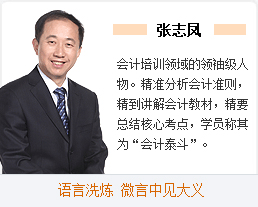
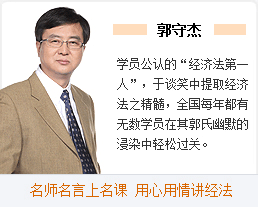
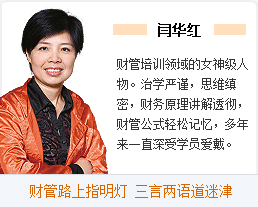
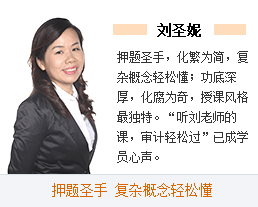
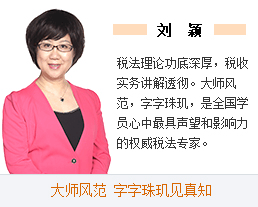
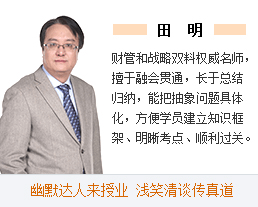




 津公網安備12010202000755號
津公網安備12010202000755號